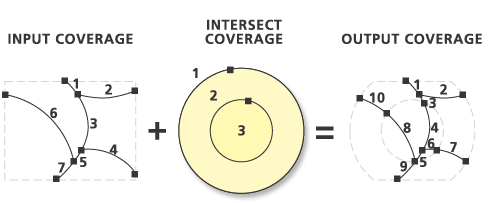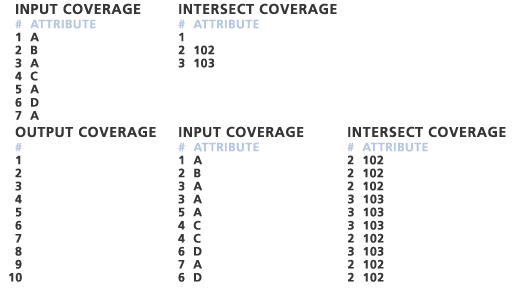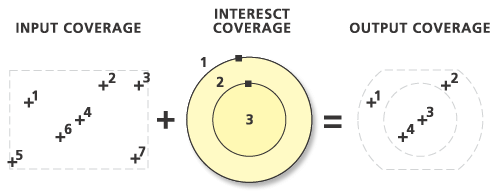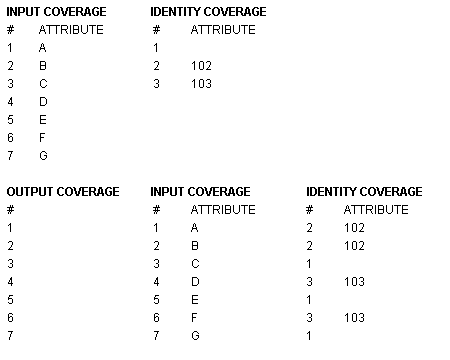Description
The Intersect tool creates a new coverage by overlaying the features from the input coverage and intersect polygon coverage. The output coverage contains the input features or portions of the input features that overlap features in the intersect coverage. The output features have the attribute from the original feature from the input coverage and the feature in the intersect coverage, which they intersect.
Intersect is one of several Overlay tools available. The tool most similar to Intersect is Clip, which does not transfer any attribute from the overlay feature class to the output.
Input Coverage features can be polygons, lines, or points. The intersect coverage must have polygon topology. Output coverage features resulting from the overlay are of the same type as the input coverage features. They are split when they intersect with the polygons of the intersect coverage. Topology is built for the output coverage.
Attribute tables are updated. The attribute table for the output coverage contains items from both the input and intersect coverage attribute tables. Items are merged using the old internal number of each feature. The two tables below list the items that are written to the attribute table of the output coverage.
For polygon or point input coverages
| Using the JOIN option (default) | Using the NO_JOIN option |
|---|---|
|
|
For line input coverages
| Using the JOIN option (default) | Using the NO_JOIN option |
|---|---|
|
|
Example
POLYGON option
Only those portions of polygons contained in areas occupied in both the input and intersect coverages are saved in the output coverage. Input coverage arcs are split at their intersection with polygons of the intersect coverage. The resulting arcs are used to build polygons using a process similar to Build with the POLY option.


LINE option
Input coverage arcs (or portions of them) are preserved only if they fall within a polygon or along a polygon boundary of the intersect coverage. The LPOLY and RPOLY values for each resulting arc are updated to contain the numbers of the intersect coverage polygons that are to its left and right sides.


POINT option
Only those points that fall within a polygon of the intersect coverage are saved in the output coverage. The output coverage polygon feature class lists the intersect coverage polygon within which each point falls.


REGION option
Intersect creates a new region coverage by overlaying two sets of regions. In the figure below, the input coverage contains regions A and B. The intersect coverage contains regions C and D. The output coverage contains only those portions of the regions that are common to both input coverages.
